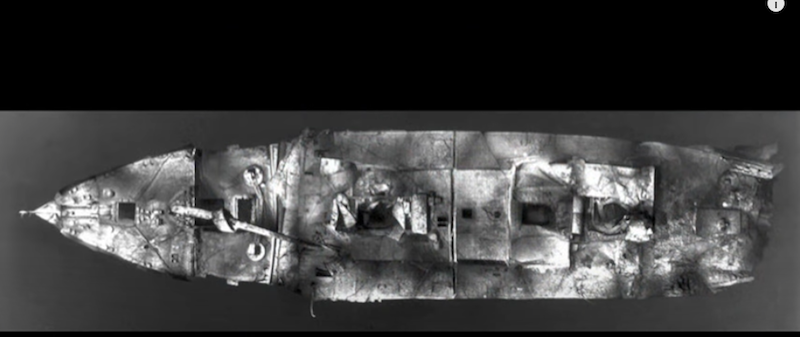I remember covering the announcement that the wreck of the Titanic had been discovered in the cold, deep waters of the North Atlantic in 1985 by a determined group of oceanographers from the Woods Hole Oceanographic Institution on Cape Cod, Mass. It was unveiled at a press conference at the National Geographic Society in Washington and featured Dr. Robert Ballard, a preeminent scientist who led the expedition and went on to make other revealing discoveries of long-lost ships.
Using a remotely-operated vehicle called Argo, the team located the “unsinkable” ship sank on its maiden voyage from Southampton, England, to New York after hitting an iceberg on April 15, 1912. More than 1,500 passengers and crew lost their lives, while many others were able to survive after boarding lifeboats.
It was amazing to see for the first time photographs and videos of the sunken vessel as it lay 2.5 miles below the ocean’s surface, a metal shell disfigured by years of deterioration from sea water exposure. The surrounding debris field was witness to both the ship’s advanced technology for its time as well as the human toll of the tragedy.
Now the Titanic is back in the spotlight. A new court ruling by the U.S. District Court for the Eastern District of Virginia cleared the way for RMS Titanic Inc. (RMST), a private salvage company, to recover the Marconi wireless telegraph from inside the wreckage. As the court-designated, exclusive holder of the Titanic’s salvage rights since the 1980s, RMST is permitted to remove artifacts from the wreck site. It has already brought up some 5,000 objects that have formed a collection often seen in museums.
Judge Rebecca Beach Smith, echoing the arguments of RMST, ruled that there’s only a small window of opportunity to retrieve the telegraph as the ship further degrades, and that saving it “will contribute to the legacy left by the indelible loss of the Titanic, those who survived and those who gave their lives in the sinking.”
The ruling is significant in that it would allow explorers for the first time since the ship’s discovery to cut into the wreck and remove an object. It modifies a ruling made in 2000 that prohibited RMST from cutting into the wreck or detaching any part of it and applies only to removal of the radio device.
The RMST plans to return to the site in August, if circumstances of the pandemic permit its funding plan to be approved by the court. Under conditions of the ruling, RMST must provide a report detailing the outcome of the dive, a list of artifacts recovered and a plan for “curation, conservation and documentation” of these objects.
RMST says a part of the ship might have to be cut or detached in order to reach the Marconi Suite, which included a sleeping area, an operator’s room and the silent room where the radio device and its components were located.
Underwater robots would be used to detach the Marconi, a wireless communication device that was an advanced radio for its time. RMST said in a court filing that it’s possible that the telegraph could be restored to operable condition, and with new components, the Titanic’s “voice could once again be heard,” which could shed light on messages transmitted during the ship’s final moments. Distress calls from the radio brought ships that rescued some 700 people. The Marconi’s operator, Jack Philips, went down with the ship.
But salvaging the device has uncapped a long-brewing battle touching on many issues, ranging from who controls or owns shipwrecks, whether the Titanic should be used as a tourist destination, whether artifacts should be taken and put on public display or should the wreck be protected and preserved as a memorial gravesite.
The ruling also calls attention to the intricacies of centuries old maritime law that generally gives salvage rights to the first explorers who bring an object of a wreck found in international waters to the surface.
Ballard’s refusal to disturb the site out of respect for the dead opened the opportunity for Titanic Ventures, which later became RMST.
“You don’t go to the battlefield of Gettysburg with a shovel,” Ballard said in a National Geographic article. “And you don’t pull belt buckles off the Arizona.”
In an interesting side note, it was revealed years later that Ballard’s discovery of the Titanic actually stemmed from a secret Cold War Navy mission that involved investigating two sunken U.S. submarines. Ballard believed that the Titanic was located between the two ships and got permission from the Navy to search for it after the sub mission was completed.
RMST says it plans to disturb as little of the Titanic as possible when it goes after the telegraph. But the whole thing makes me uncomfortable. Should we view this the same as removal of a black box from an airplane that might hold unknown data or secrets? Or should we just be happy with what we already know?




